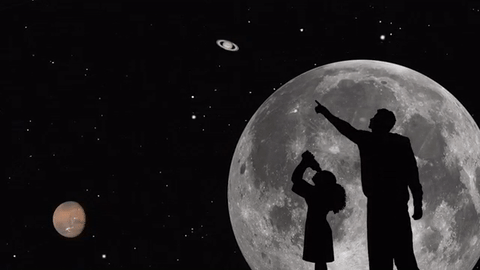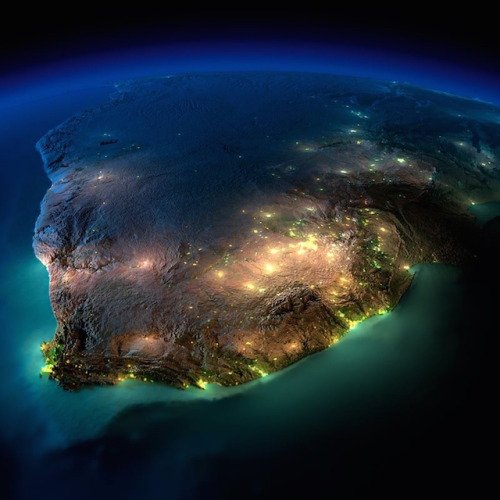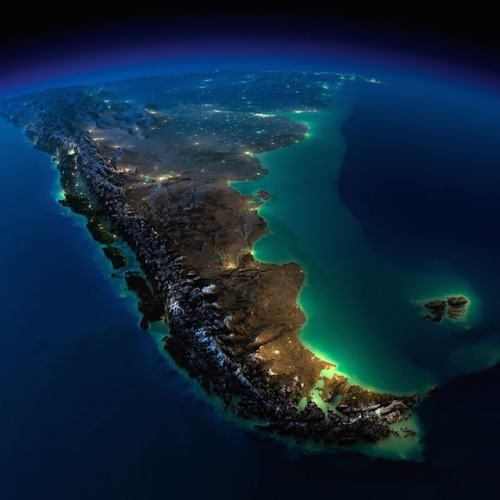Drunkscience4u - Drunk Science

More Posts from Drunkscience4u and Others
Seer of Seers Sage of Sages Prognosticator of Prognosticators Weather Prophet Extraordinary
So reads the official title of Punxsutawney Phil, the world’s most famous weather-predicting groundhog/woodchuck/marmot/whistle pig (yes, they are, in fact, all the same animal… surprises abound in the world of meteorological mammals).
Phil hails from the town of Punxsutawney, PA, where every year on February 2, a group of grown men sporting top hats and waxed mustaches pull him out of a box and ask him when winter will end. I can never keep straight whether seeing the shadow means spring will come early or if we’ll have a long winter, but this doesn’t really matter, since rodents are not good weather prediction tools.

Despite being about as reliable as a coin flip, Phil is joined in this annual tradition by more than a dozen North American groundhogs like Shubenecadie Sam, General Beauregard Lee, and Wisconson’s humbly-named Jimmy the Groundhog, seen here:

Surprise! Groundhogs can bite! And I would too, if you forcibly removed me from my warm, comfy house, held me aloft in the frigid air in front of thousands of gaping onlookers and flashing lights and asked me about a subject in which I have no expertise.

Rodents might not be real educated in the fields of meteorology and astronomy, but humans are! We’ve got Earth’s orbital mechanics and their corresponding effect on annual temperature cycles down to a literal science. We smart. Just look…

I dug into the science of seasons this week, and I discovered that our system of defining “winter” and “summer” and “spring” and “autumn”, at least the way that most of us non-meteorologists think of them, doesn’t really make sense when you compare it to the weather.

You might already know that we define “winter” or “summer” based on Earth’s position in relation to the sun, namely the solstices. This makes the seasons easy to keep track of, but for most of us these dates are unreliable, illogical, and remarkably disconnected from the actual weather. The little boxes on your calendar that say “First Day of Winter”, “First Day of Spring” and so on don’t line up very well with how cold or hot it is outside.
Unfortunately, that’s what happens when you try to apply a single calendar to an entire planet… could there be a better way?
You can learn the rest of the story by watching this week’s It’s Okay To Be Smart up at the top of this post. Enjoy!

What’s Up for February?
What’s Up for February? Look to the night sky for a brighter Venus, Comet 45P, asteroid Vesta and more.

Tonight, you can see Venus along with a crescent moon, Mars and Uranus just after sunset. No binoculars needed!

While there are no meteor showers this month, behold the zodiacal light!

This phenomenon is caused when sunlight reflects off dust particles in the plane of our solar system. Use Venus and Mars as a cone-shaped guide on the western horizon in late February and March.

Comet 45P will be visible using binoculars and telescope and will make its closest approach to Earth on February 11.

Finally, bright asteroid Vesta can be found in the constellation Pisces.
Follow us on Tumblr for your regular dose of space: http://nasa.tumblr.com

Primitive plants are the latest forms of Earth life to show they can survive in the harshness of space, and for many months. Cold-loving algae from the Arctic Circle have joined the space-travelling club, alongside bacteria, lichens and even simple animals called tardigrades.
Preliminary studies of the algae after their return to Earth from the International Space Station lend some weight to the “panspermia” theory, that comets and meteorites could potentially deliver life to otherwise sterile planets. The results also provide insights into the potential for human colonies on distant planets to grow crops brought from Earth.
The algae were of the Sphaerocystis species, codenamed CCCryo 101-99, and were returned to Earth in June last year after spending 530 days on a panel outside the ISS. While space-borne, they withstood the vacuum, temperatures ranging from -20 °C at night to 47.2 °C during the day, plus perpetual ultraviolet radiation of a strength that would destroy most life on Earth if not filtered out by the atmosphere.
“I’m sure that plants of many kinds have been on the ISS before, but on the inside, not the outside,” says Thomas Leya of the Fraunhofer Institute for Cell Therapy and Immunology in Potsdam, Germany, who organised the algae experiment. “As far as I know, this is the first report of plants exposed on the surface of the space station.”
Continue Reading.

There will be drink. There will be science. There will be funny.
New Youtube series my friend and I are putting together. Come follow the facebook and youtube for more information!!!

In spite of a decade of intense research, we still don’t have a commercially available vaccine for malaria.
While a candidate vaccine is being piloted next year, scientists have found a potentially more promising target in the bridge malaria makes with our red blood cells, which could lead to a more effective, cheaply made vaccine.
Continue Reading.
Flying to New Heights With the Magnetospheric Multiscale Mission
A mission studying Earth’s magnetic field by flying four identical spacecraft is headed into new territory.

The Magnetospheric Multiscale mission, or MMS, has been studying the magnetic field on the side of Earth facing the sun, the day side – but now we’re focusing on something else. On February 9, MMS started the three-month-long process of shifting to a new orbit.

One key thing MMS studies is magnetic reconnection – a process that occurs when magnetic fields collide and re-align explosively into new positions. The new orbit will allow MMS to study reconnection on the night side of the Earth, farther from the sun.

Magnetic reconnection on the night side of Earth is thought to be responsible for causing the northern and southern lights.

To study the interesting regions of Earth’s magnetic field on the night side, the four MMS spacecraft are being boosted into an orbit that takes them farther from Earth than ever before. Once it reaches its final orbit, MMS will shatter its previous Guinness World Record for highest altitude fix of a GPS.
To save on fuel, the orbit is slowly adjusted over many weeks. The boost to take each spacecraft to its final orbit will happen during the first week of April.

On April 19, each spacecraft will be boosted again to raise its closest approach to Earth, called perigee. Without this step, the spacecraft would be way too close for comfort – and would actually reenter Earth’s atmosphere next winter!

The four MMS spacecraft usually fly really close together – only four miles between them – in a special pyramid formation called a tetrahedral, which allows us to examine the magnetic environment in three dimensions.

But during orbit adjustments, the pyramid shape is broken up to make sure the spacecraft have plenty of room to maneuver. Once MMS reaches its new orbit in May, the spacecraft will be realigned into their tetrahedral formation and ready to do more 3D magnetic science.

Learn more about MMS and find out what it’s like to fly a spacecraft.
-
 weesheshy-old reblogged this · 3 weeks ago
weesheshy-old reblogged this · 3 weeks ago -
 ask-grapesherbet liked this · 10 months ago
ask-grapesherbet liked this · 10 months ago -
 seanthecool373 liked this · 1 year ago
seanthecool373 liked this · 1 year ago -
 poeticlifephoto liked this · 2 years ago
poeticlifephoto liked this · 2 years ago -
 maybeinthefuture liked this · 2 years ago
maybeinthefuture liked this · 2 years ago -
 omnipah liked this · 2 years ago
omnipah liked this · 2 years ago -
 guardianite liked this · 2 years ago
guardianite liked this · 2 years ago -
 cyncerity liked this · 2 years ago
cyncerity liked this · 2 years ago -
 troublegoose reblogged this · 2 years ago
troublegoose reblogged this · 2 years ago -
 troublegoose liked this · 2 years ago
troublegoose liked this · 2 years ago -
 adorkable1291 reblogged this · 2 years ago
adorkable1291 reblogged this · 2 years ago -
 persephonedevoted reblogged this · 2 years ago
persephonedevoted reblogged this · 2 years ago -
 persephonedevoted liked this · 2 years ago
persephonedevoted liked this · 2 years ago -
 adventuresofstybba liked this · 2 years ago
adventuresofstybba liked this · 2 years ago -
 turtles-allthewaydown reblogged this · 2 years ago
turtles-allthewaydown reblogged this · 2 years ago -
 shits-gotta-change reblogged this · 2 years ago
shits-gotta-change reblogged this · 2 years ago -
 willow7010 liked this · 3 years ago
willow7010 liked this · 3 years ago -
 skybells507 liked this · 3 years ago
skybells507 liked this · 3 years ago -
 icarusalis reblogged this · 3 years ago
icarusalis reblogged this · 3 years ago -
 icarusalis liked this · 3 years ago
icarusalis liked this · 3 years ago -
 whatweaweon liked this · 4 years ago
whatweaweon liked this · 4 years ago -
 whatever-the-hell-i-want reblogged this · 4 years ago
whatever-the-hell-i-want reblogged this · 4 years ago -
 chnxfng reblogged this · 4 years ago
chnxfng reblogged this · 4 years ago -
 js79 liked this · 4 years ago
js79 liked this · 4 years ago -
 woersen liked this · 4 years ago
woersen liked this · 4 years ago -
 esffin reblogged this · 5 years ago
esffin reblogged this · 5 years ago -
 leavesinthesnow reblogged this · 5 years ago
leavesinthesnow reblogged this · 5 years ago -
 lesonicaro reblogged this · 5 years ago
lesonicaro reblogged this · 5 years ago -
 lesonicaro liked this · 5 years ago
lesonicaro liked this · 5 years ago -
 leavesinthesnow liked this · 5 years ago
leavesinthesnow liked this · 5 years ago -
 rowan-reads liked this · 5 years ago
rowan-reads liked this · 5 years ago -
 xylophonicsynapse liked this · 5 years ago
xylophonicsynapse liked this · 5 years ago -
 stardust-spice liked this · 5 years ago
stardust-spice liked this · 5 years ago -
 watercolor-alien-backup liked this · 5 years ago
watercolor-alien-backup liked this · 5 years ago -
 missytwelve reblogged this · 5 years ago
missytwelve reblogged this · 5 years ago -
 cataradical liked this · 5 years ago
cataradical liked this · 5 years ago -
 smones reblogged this · 5 years ago
smones reblogged this · 5 years ago -
 cprwords reblogged this · 5 years ago
cprwords reblogged this · 5 years ago -
 cprwords liked this · 5 years ago
cprwords liked this · 5 years ago -
 smashed-hard-drive liked this · 5 years ago
smashed-hard-drive liked this · 5 years ago
The official page of Drunk Science! An enthusiastic host performs simple experiments and then humorously explains the science behind the result, all while visibly drunk.
126 posts

























